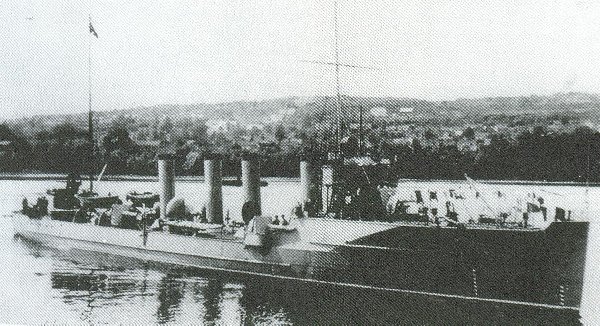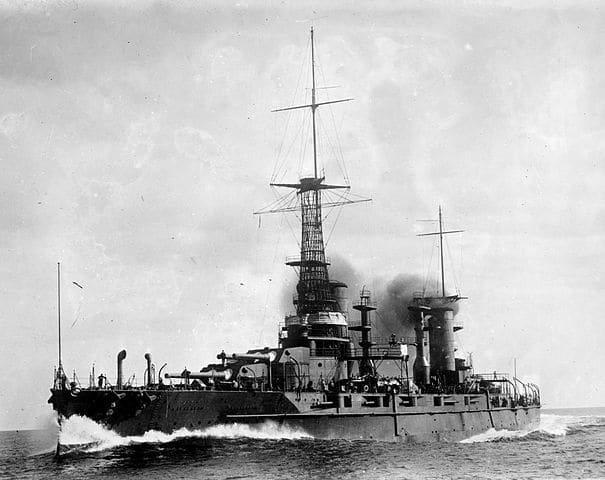Navies of third and fourth rate in 1914-18
North, West and Eastern Europe, South America, Asia, Middle East…
Third rate navies:
-Scandinavia: Norwegian, Danish and Swedish Navies
-Western Europe: Dutch, Spanish, Portuguese Navies
-Balkans: Greek, Bulgarian, Romanian Navies
-South America: Brazil, Argentina, Chili, Peru
-Asia: China, Siam
Fourth Rate Navies:
Belgium, Cambodge, Colombia, Costa Rica, Cuba, Equador, Egypt, Haiti, Honduras, Mexico, Paraguay, Persia, Uruguay, Venezuela.
By stating “third rank” we don’t intend to offense any nation, but since the Royal Navy could be assimilated as a naval superpower or “first rank navy”, there were certainly “second rank” ones, namely all from major naval powers at the time, including USA (soon to be first rank, as well as Japan), France, Germany, Italy and Russia. Austro-Hungary was second rank, but probably leaned towards a third rank one, as well as Turkey. In this new chapter we’ll see all these less-known navies, from solid, powerful third rank to very small fleets, more akin hypothetic “fourth rank” ones.
In 1914, Scandinavian countries are in neutrality position. “Third rank” marines were tied to the neutral posture of their countries for the most. Meanwhile, some fell either by choice of force in one or another side: This was the case of the Dutch Fleet, which, far to be negligible in 1914, was one of strongest of the list, although weakened by her geographical split between Europe and the Far East.

Norwegian Draug class destroyers
Turkey much involved to the side of Austro-Hungary and Germany, and despite being Europe’s “sick man”, the Turkish fleet was in quantity and quality lightyears from what she was earlier in the XIXth Century, especially in the 1870s when she openly rivaled the Russian Navy in the Black Sea and dominated the Eastern Mediterranean, like the old glory days of the Ottoman Empire. But she received an unexpected boost by the arrival of the modern German Cruiser Breslau and Battlecruiser Goeben, following an epic escape (see Admiral Souchon “mad run” to Constantinople).
Unfortunately for the Ottoman Empire, allied might in the Mediterranean was crushing, especially after the arrival of Italy in 1915, added to the Russian and Greek navies, not speaking of the French and British fleets, the latter blocking both gateways to the antique sea, via Gibraltar and the Suez Canal. As a result, the few Turkish successes were attributed to a single minelayer in the Dardanelles.
Rival Greek Navy was Balkan’s main naval power. Romania and Bulgaria, as well as Albania possessed a few valuable units, but carefull stayed neutral after the bloodbath of the recent Balkan war. Of the three Scandinavian navies, which strongly stuck to their non-belligerent status, were focused on coastal defense. Crossing fire with the Hochseeflotte was out of question.
From the Iberian Peninsula, Spanish and Portuguese Navies, still counting a few colonies, only had a minimal strength and stayed neutral. Portugal counted six small cruisers, while Spain which had its nose blooded in 1898, against a rising, reborn young US Navy, still possessed five cruisers and one old battleship, but also three brand new Dreadnought commissioned in UK and partly built locally at the Ferrol Shipyard.

Argentinian Rivadvia class Battleships. Brazil, Argentina and Chile competed for naval supremacy with US or UK ordered dreadnoughts.
South American countries had been well equipped, rival Argentina, Chile and Brazil ordering Dreadnoughts and counting on the extreme smaller units or feeble tonnage. Their naval policy was naturally aligned to the US Navy doctrine and also strayed neutral.
In Asia, young and old Dragons also competed for regional supremacy. Of course Japan was the naval superpower on the rise, blessed by the celebrated Battle of Tsushima ten years ago, inflicting a crushing blow to the Russian Pacific and Black sea fleets. China was no more than a quiet observator, its fleet crippled by her defeat in 1894 at Yalu, again at the masterful hands of the Japanese. Recent events had been merely an appetizer for Nihhon Kaigun indeed, as she will rose to the global third place. China on the other hand, prudently remained neutral, only in situation to guard its waters and patrol the yellow river with a fleet of gunboats. Siam possessed also a diverse aggregate of armed civilian ships, but nonetheless declared war to the central Powers in 1917, a decision of little consequence…

 Latest Facebook Entry -
Latest Facebook Entry -  X(Tweeter) Naval Encyclopedia's deck archive
X(Tweeter) Naval Encyclopedia's deck archive Instagram (@navalencyc)
Instagram (@navalencyc)





 French Navy
French Navy Royal Navy
Royal Navy Russian Navy
Russian Navy Armada Espanola
Armada Espanola Austrian Navy
Austrian Navy K.u.K. Kriegsmarine
K.u.K. Kriegsmarine Dansk Marine
Dansk Marine Nautiko Hellenon
Nautiko Hellenon Koninklije Marine 1870
Koninklije Marine 1870 Marinha do Brasil
Marinha do Brasil Osmanlı Donanması
Osmanlı Donanması Marina Do Peru
Marina Do Peru Marinha do Portugal
Marinha do Portugal Regia Marina 1870
Regia Marina 1870 Nihhon Kaigun 1870
Nihhon Kaigun 1870 Preußische Marine 1870
Preußische Marine 1870 Russkiy Flot 1870
Russkiy Flot 1870 Svenska marinen
Svenska marinen Søværnet
Søværnet Union Navy
Union Navy Confederate Navy
Confederate Navy Armada de Argentina
Armada de Argentina Imperial Chinese Navy
Imperial Chinese Navy Marinha do Portugal
Marinha do Portugal Mexico
Mexico Kaiserliche Marine
Kaiserliche Marine 1898 US Navy
1898 US Navy Sovietskiy Flot
Sovietskiy Flot Royal Canadian Navy
Royal Canadian Navy Royal Australian Navy
Royal Australian Navy RNZN Fleet
RNZN Fleet Chinese Navy 1937
Chinese Navy 1937 Kriegsmarine
Kriegsmarine Chilean Navy
Chilean Navy Danish Navy
Danish Navy Finnish Navy
Finnish Navy Hellenic Navy
Hellenic Navy Polish Navy
Polish Navy Romanian Navy
Romanian Navy Turkish Navy
Turkish Navy Royal Yugoslav Navy
Royal Yugoslav Navy Royal Thai Navy
Royal Thai Navy Minor Navies
Minor Navies Albania
Albania Austria
Austria Belgium
Belgium Columbia
Columbia Costa Rica
Costa Rica Cuba
Cuba Czechoslovakia
Czechoslovakia Dominican Republic
Dominican Republic Haiti
Haiti Hungary
Hungary Honduras
Honduras Estonia
Estonia Iceland
Iceland Eire
Eire Equador
Equador Iran
Iran Iraq
Iraq Latvia
Latvia Liberia
Liberia Lithuania
Lithuania Mandchukuo
Mandchukuo Morocco
Morocco Nicaragua
Nicaragua Persia
Persia San Salvador
San Salvador Sarawak
Sarawak Uruguay
Uruguay Venezuela
Venezuela Zanzibar
Zanzibar Warsaw Pact Navies
Warsaw Pact Navies Bulgaria
Bulgaria Hungary
Hungary

 Bundesmarine
Bundesmarine Dutch Navy
Dutch Navy Hellenic Navy
Hellenic Navy Marina Militare
Marina Militare Yugoslav Navy
Yugoslav Navy Chinese Navy
Chinese Navy Indian Navy
Indian Navy Indonesian Navy
Indonesian Navy JMSDF
JMSDF North Korean Navy
North Korean Navy Pakistani Navy
Pakistani Navy Philippines Navy
Philippines Navy ROKN
ROKN Rep. of Singapore Navy
Rep. of Singapore Navy Taiwanese Navy
Taiwanese Navy IDF Navy
IDF Navy Saudi Navy
Saudi Navy Royal New Zealand Navy
Royal New Zealand Navy Egyptian Navy
Egyptian Navy South African Navy
South African Navy






























 Ukrainian Navy
Ukrainian Navy dbodesign
dbodesign